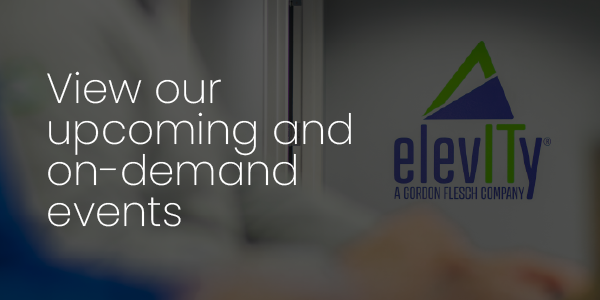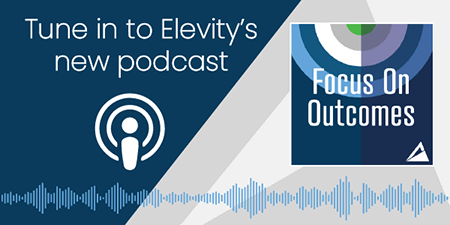Cybercriminals threaten your company every day, whether you realize it or not. That’s just a fact of modern life. But how many risks do you face, and what can you do to minimize such risks?
To give you some perspective, 2023 saw a 72% increase in data breaches since 2021, which held the previous record. Nearly 350 million victims were affected.
It’s tempting to throw up your hands, believing there’s nothing you can do to stop a determined cybercriminal. Today's unfortunate reality is that no one is safe from cyber attacks, but there are ways to avoid the lasting effects that can occur.
Cybersecurity risk assessment tools help organizations understand, control and mitigate all forms of cyber risk. They stand as critical components of a risk management strategy and data protection. As organizations rely more heavily on connected systems to do business, the digital risk landscape expands — exposing you to new vulnerabilities.
What is risk assessment in cybersecurity, and how can your company take the next step? We’ve assembled the five top IT risk assessment tools and strategies that all organizations should embrace to minimize their cybersecurity risks, along with helpful tips.
- NIST Framework
- Network Security Assessment
- Automated Questionnaires
- Staff Assessments
- Third-Party Risk Assessment
1. NIST Framework
The National Institute of Standards and Technology (NIST) Cybersecurity Framework (CSF) is a process to continually monitor, assess and react to the threat environment and intelligently respond to potential threats while keeping data secure with well-established best practices. It was created when forward-thinkers in government and business collaborated to address concerns over the protection of critical infrastructure.
The NIST Cybersecurity Framework offers guidelines to help organizations manage and reduce cybersecurity risks. Additionally, the framework helps improve cyber risk management communication between internal and external stakeholders.
Risk management frameworks include five functions, each related to different areas of risk management:
- Identify
- Detect
- Protect
- Respond
- Recover
It’s a proactive view that we believe in and adapted for our own approach to cybersecurity at Elevity. The level of detail helps companies ensure they manage risks appropriately while improving their ability to identify cybersecurity threats.
Further Reading: Top 10 List of Cybersecurity Facts
2. Network Security Assessment
A network security assessment is a type of audit. It’s a review of your network’s security posture that identifies vulnerabilities in your system. Some examples of steps that Elevity takes as part of a technology audit include:
- Assessing each device on the network to find gaps in the IT infrastructure
- Scanning for compromised data on the Dark Web
- Neutralizing threats across browsers, email and files
- And more
Network security assessments come in two forms: vulnerability assessments reveal weaknesses and risks, while penetration tests simulate real attacks. The goal is to identify potential entry points for expensive cyberattacks, whether originating from within or outside the organization.
These risk analysis tests can measure the effectiveness of your network’s defenses and give you answers to some key questions like:
- What happens if a system is breached?
- What data is vulnerable?
- How many records might be compromised?
- What steps need to be taken to mitigate the attack?
A security assessment serves as a dry run so you’re prepared should a real threat come knocking on your virtual door.
3. Automated Questionnaires
A questionnaire is a key cyber risk assessment component to evaluate third-party risks. However, developing and sending questionnaires can be a resource-intensive task, and validating responses can be difficult.
Using an automated survey platform helps address these challenges by creating vendor-specific questions that can be sent and tracked at scale. This creates transparency between you and your vendors since you can track their responses in real time — streamlining questionnaire management.
4. Staff Assessments
Estimates vary, but about one in three people work remotely at least some of the time. As a result, employees may use their personal devices for work, share their work devices with non-employees, use unsecured Wi-Fi networks or fall prey to phishing emails.
Your information system can also be put at risk through poor document retention, the use of unencrypted USB flash drives or unsecured channels to transmit critical information. In essence, information security protection measures may not be there, leaving your network vulnerable to cyberattacks.
Testing an employee’s cybersecurity awareness and responses is important, whether they’re in-office or remote. This can be done using a phishing simulator, which allows you to set up emails that appear to be from management, the IT security team or colleagues. The goal is to test employees to see if they open a link, submit credentials or download an attachment. The information you receive can be used to train employees on cybersecurity best practices and tips to avoid cyberattacks.
If your network security is lacking due to remote work, we highly recommend implementing Virtual Desktop Infrastructure (VDI) — particularly through Microsoft Azure.
Learn More: Top 5 VDI FAQs for Business
5. Third-Party Risk Assessment
Unfortunately, hackers are targeting third-party partners to launch data breach efforts. We strongly recommend that your organization conduct a vulnerability assessment, take an inventory and analyze your existing security controls to identify threats and vulnerabilities within your IT infrastructure.
Using the assessment report, evaluate vendor performance, which can help bolster third-party business relationships and help you end the use of any technology, services or partnerships that may open your company to hacks.
Take Our Free Online Cybersecurity Risk Assessment
How Would You Rate Your Risk?
Access to cyber risk assessment tools is a necessity as cyber threats grow in scale and complexity. At Elevity, we take cybersecurity very seriously and use our own 4S approach to help keep your systems safe and identify threats:
- Strategy
- Security
- Solutions
- Support
With this risk management process as our backbone, we’ve developed another tool you can use right now.
We invite you to take our free cybersecurity risk assessment by clicking the link below. Simply answer some key questions to get your risk score and learn the ideal next steps to take to amp up your cybersecurity.










%20cropped.jpg?width=200&height=200&name=David_Eichorn%20(Pro)%20cropped.jpg)





